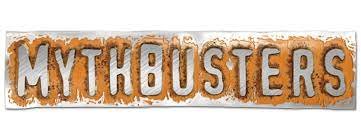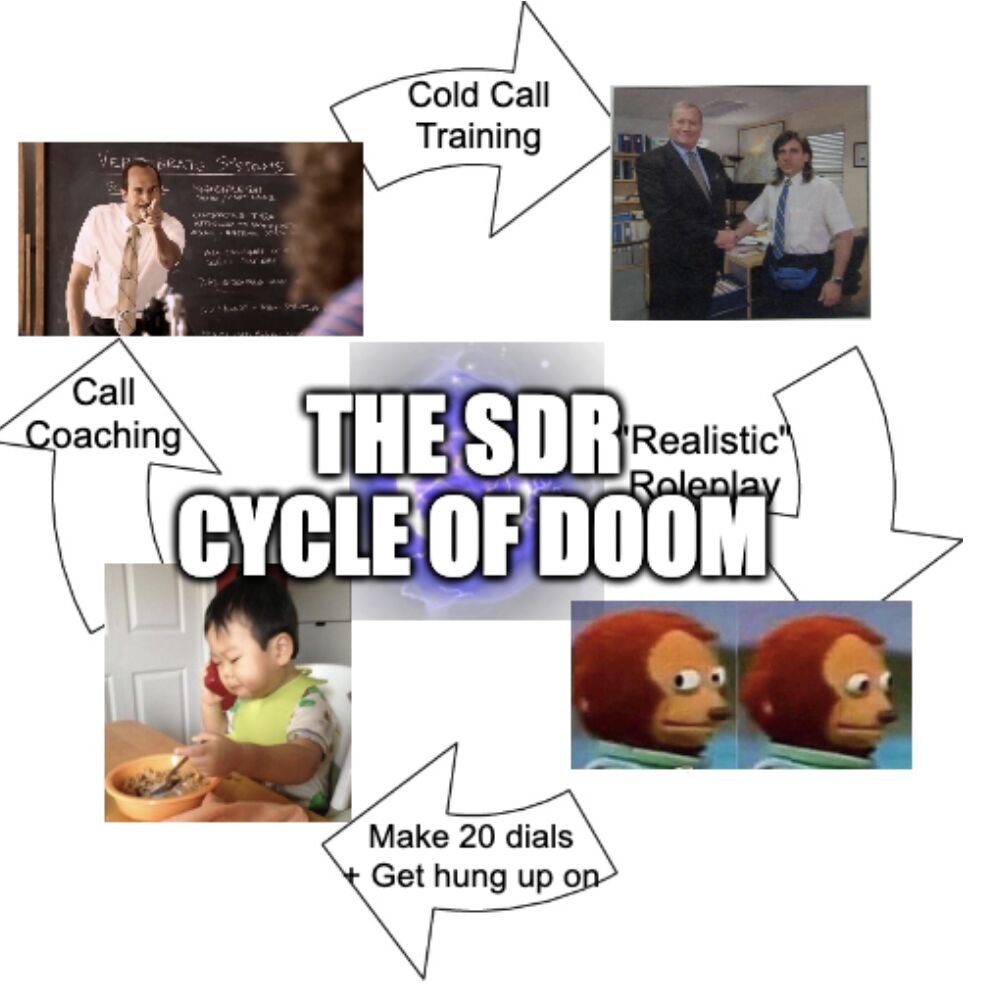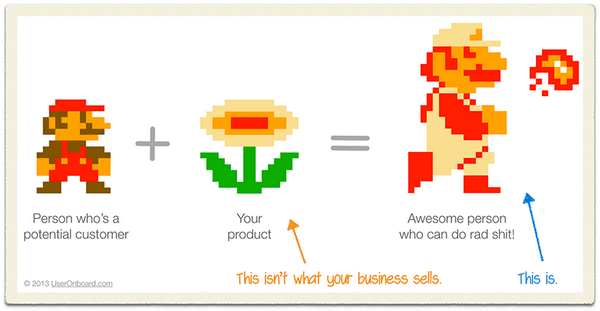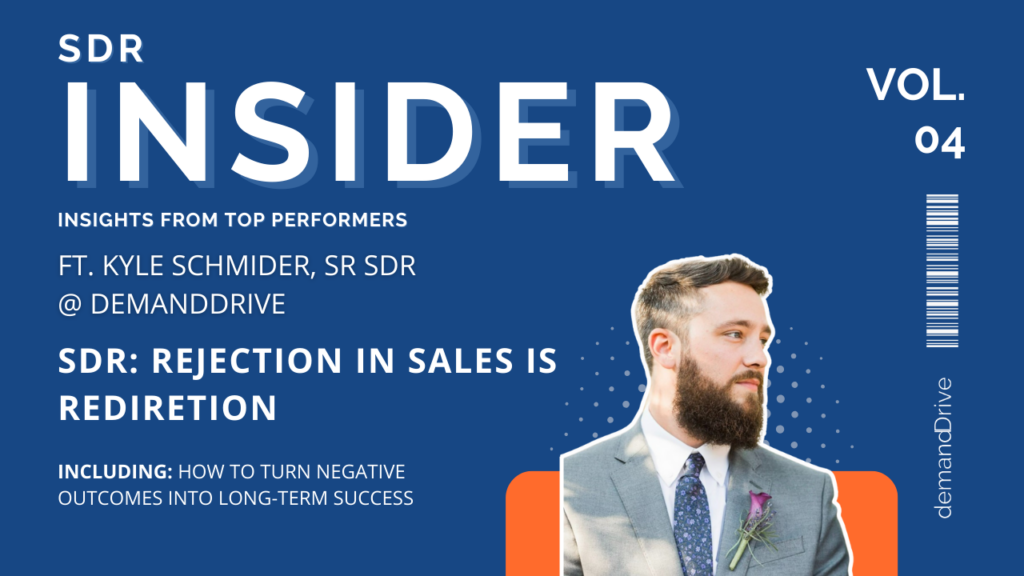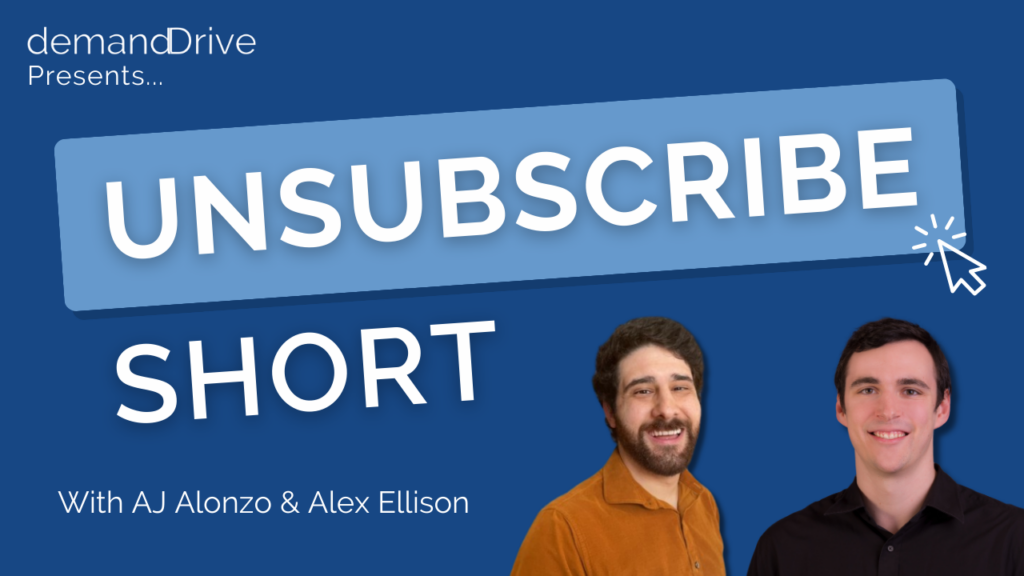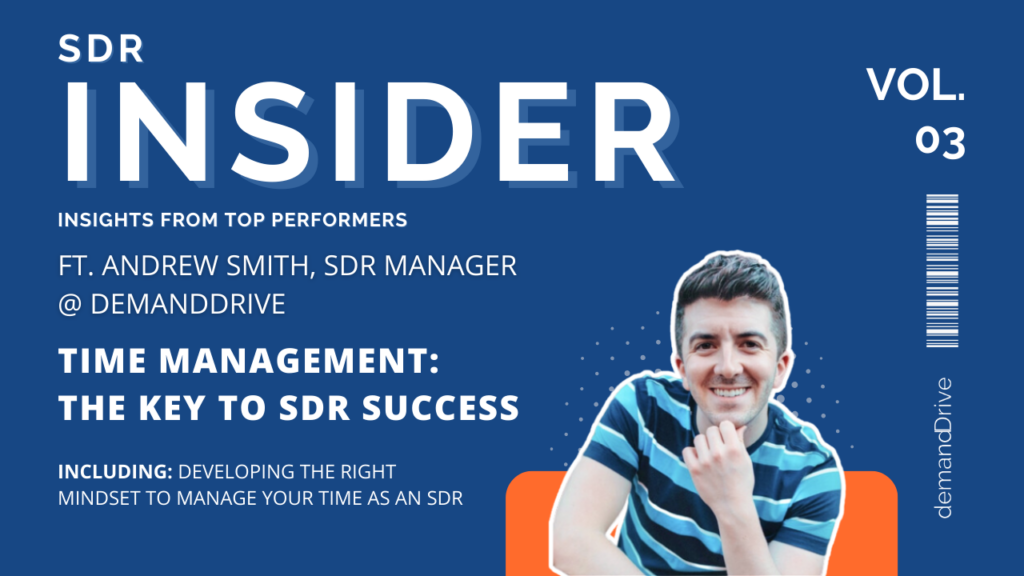Is The SDR Model Still Viable?
How Maria Bross of revenue.io is modernizing the way we look at SDR training, onboarding, and support.
Our Guest
Name: Maria Bross
What She Does: Maria is the Director of Sales Development at Revenue.io and a 2023 LinkedIn Top Sales Voice.
Company: Revenue.io
How to Connect: Maria’s LinkedIn
There’s a common myth that some of us are natural-born salespeople – and without that innate ability or predisposition, you won’t see success as an SDR.
Well, consider this podcast an episode of MythBusters because we reject that reality and substitute our own.
And so does our guest, Maria Bross of Revenue.io. She is a self-proclaimed “not naturally good at saleser,” and yet she’s built out an impressive career as both an IC and as a manager+.
Her secret? Training, coaching, and support.
And those themes stayed constant throughout her full circle journey – from Sales Development Rep to Sales Enablement Manager and back to Sales Development, this time in a leadership position. Her love of adult learning and fascination with pipeline generation propelled Maria forward – not some “innate ability.”
We talk about the impact of a well-structured training program, what happens when management offers minimal support, and whether or not the SDR model is still viable in today’s modern environment.
Key Takeaways
-
Is the SDR model no longer viable? What are we seeing today that makes people think that? What are you seeing/doing that proves it’s alive and well?
-
What do companies get wrong with their training programs? What does a well-built training, onboarding, and coaching program look like?
-
SDR Cycle of Doom!
-
-
Let’s look at the benefits of a well-run SDR program. What can it provide that an unsupported function can’t?
-
What can undersupported SDRs do to make an impact at their organization? Where can they go for the resources they need if they’re not present internally?
-
What can managers do if leadership isn’t bought in on the SDR function?
Top 3 Takeaways
🤗 “The people we’re selling to…what do they care about?”
Traditionally, sales training is all about product. What can it do? How is it better than the competition? How much faster/stronger/sleeker is it compared to what your prospect is currently using?
And Maria’s early days of training and coaching fell into that same trap – then she noticed how ineffective it was. And soon she began to realize that the big component missing from her training and onboarding sessions were the people. What did the personas her team sold to really care about?
She rattled off a bunch of questions that better set her reps up for success when talking with prospects:
-
How often do my prospects talk about the problems we’re trying to solve?
-
What does the status quo look like? What’s the impact if they don’t change from that status quo?
-
How are we helping prospects approach their goals and challenges?
-
What can we teach them?
-
How does what we do make our prospects more awesome at their job or better address things that are frustrating?
If you can build your training program to help reps ask questions like those 👆 you’ll help them establish a strong foundation to have some really good organic conversations with their prospects. And those organic conversations are much easier to convert into meetings VS rattling of a bunch of product features.
Otherwise, they end up in the “SDR Cycle of Doom”
🧠 “87% of new information is forgotten in the first 30 days after learning it…”
Do we (in general) need to focus on more coaching? You bet.
But you also have to think about information adoption. Right now, a lot of sales development suffers from a “Ron Popeil” problem – teams set it and forget it. Reps get a week or two of hands-on training, and then it’s off to the races.
These “one and done” training processes simply aren’t as effective as a continuous coaching motion. Maria referenced a Gartner article she read about learning & retention, and one statistic was a real eye-opener.
Gartner research finds that B2B sales reps forget 70% of the information they learn within a week of training, and 87% will forget it within a month. To realize the benefits that technology can offer for training and coaching, CSO and sales leaders must embrace its advantages and understand its impact on sales processes.
We’re not math experts, but 87% is pretty darn close to 100%. How can you expect your SDRs to succeed if you aren’t reinforcing the lessons taught during that initial training period?
🤷 Do we even need SDRs?
The question of the show – does it still make sense to build an SDR function? After all, the investment of time and resources you need to generate success is leaps and bounds beyond what it used to be.
Short answer – of course it makes sense. And Maria gave a few good reasons why:
-
Not all SDRs want to become AEs…but if you find one that does, you can build a really solid bench for future AE positions at your company. It’s a lot easier to promote someone internally than source an external candidate – and the internal candidates are already familiar with your personas/value props.
-
Pipeline pipeline pipeline. The SDR function is a pipeline generation machine, and that’s the lifeblood of any sales org. Maria’s worked with companies where the SDR function is responsible for ~70% of the pipeline generation (while only getting 25% of the support…). Last year, Revenue.io was able to double their pipeline revenue month over month with the same number of reps – a testament to the value of a well-structured training and coaching motion.
-
Feedback loops. SDRs are built to get “boots on the ground” intel that can impact your marketing campaigns, messaging, product updates, etc. There a ton of hidden values your SDRs can provide outside of traditional counting metrics like connects, leads, and pipeline revenue.
And above anything else, the biggest thing to remember is that if you don’t plan to properly invest in this team, don’t bother building one.
Our Favorites
🤔 “Does this feel like me?”
We live in an age where sales development advice is everywhere. It’s a far cry from the lack of support & content that existed a decade ago. And that’s great, but it can also lead to a little “paradox of choice” for your reps. What advice do they listen to? What do they ignore?
As a manager or director, your job includes preparing reps for autonomous learning. Enable them to go out and find the advice and insight that resonates with them the most. And this is where critical thinking and self-awareness really shines.
Reps have to understand that just because a tactic or message works for someone else, it doesn’t mean it will automatically work for them. That rep could be selling to a different ICP, work within a totally different industry, or have a vastly different personality than your rep.
Supporting your reps means guiding them to the advice and tactics that work for them, not someone else.
🧑🤝👩 “Focus on your prospects, not your product”
We’re getting big Mario vibes from Maria’s closing words:
You’re not selling a product’s “bells and whistles” – especially as an SDR. You’re selling a future state for your prospects.
If you want to earn a meeting, you have to first understand why a prospect would even consider taking one. Beyond the value propositions your solution offers, think about what your prospect truly cares about. It’s like Maria stated earlier in the episode, “what’s the impact if they don’t change from the status quo?”
Training and coaching reps to tap into that is tough, no doubt about it. It’s much easier for them to recite a script and list off your product’s features and benefits. But that doesn’t earn meetings – knowing your prospect’s goals and challenges (and tying them back to your solution) does.
Final Thoughts
Hey listener, AJ here 👋
Maria shared a ton of (in my opinion) actionable insight for sales development leaders in this episode. In particular, here are a few things you can start doing today to make a positive impact on your SDR team:
-
Prospects, not product. Your training and coaching motions need to focus on what your prospects actually care about, not what you think your product does well. Sam McKenna and her “Show Me You Know Me” movement (#SMYKM) speaks to this. It’s a lot easier to cut through the noise and have positive, organic conversations if you focus training around your prospect’s challenges & goals.
-
Coach continuously, not ad hoc. If you want reps to retain and effectively use the tactics and ideas you coach up, it needs to be repeated again and again and again. Information retention is low. Be proactive. One-and-done training environments do not work.
-
Take advantage of your SDRs hidden values. Nobody wants to be a cog in a machine – especially if that cog is only doing cold outreach every day. Find ways to establish feedback loops with your reps and show them the other ways their activities make an impact on the organization overall.
Your SDR function can be incredibly value to the sales org at your company – and it’s the job of sales leadership to unlock that value. A well-structured onboarding, training, and coaching motion is a solid first step to making that happen.
Other Episodes
Ep. 4 • 31 min.
Ep. 2 • 11 min.
Ep. 3 • 48 min.


